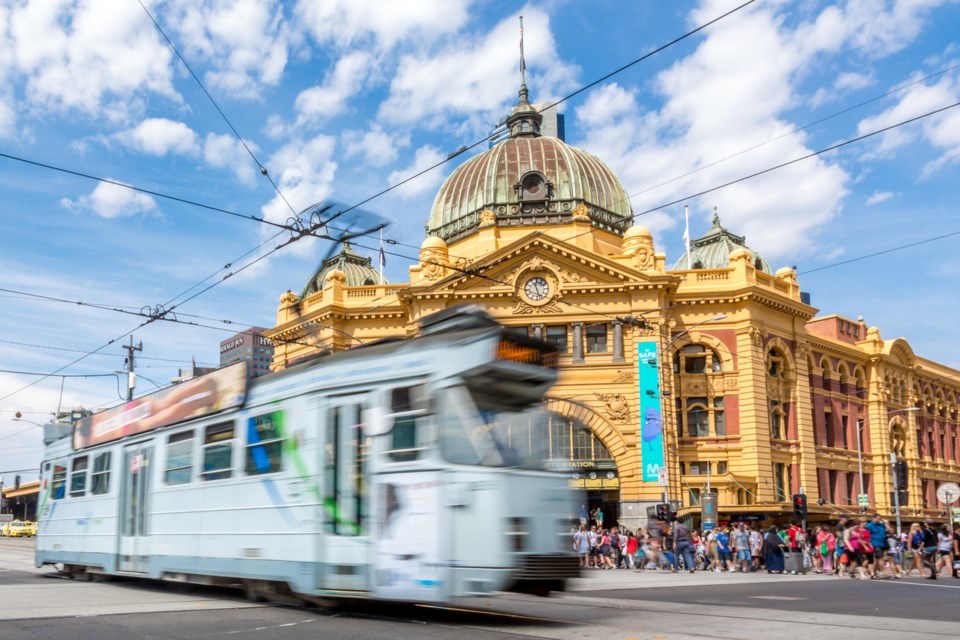There’s a funny rivalry that exists between Melbourne and Sydney. Australia’s two largest cities have a long history of jockeying for the world’s attention, each believing they are Australia’s greatest gift to the world. It can get a little nasty.
Ask a Sydneysider what they think of Melbourne, and they’ll invariably moan about the “intolerable” weather of their southern sibling. Somehow, the fact the temperature in Melbourne occasionally dips below 15 C in the winter and rarely tops 40 C in the summer is a bad thing. Meanwhile, Sydney literally catches fire for three months of the year and elderly residents will gladly show you their melanoma scars with a bizarre sense of pride.
While Sydney has the good looks and overpriced real estate, Melbourne has quietly established itself as superior in almost every other way
In recent years, you could be forgiven for thinking Sydney has come out ahead, though. It’s bigger, it had the 2000 Summer Olympics, it has the opera house and the bridge and the beaches and the postcard-perfect-everything. There’s no denying Sydney is a gob-smackingly beautiful city.
Even Melbournians will cheekily concede that fact: “Well, it’s certainly a pretty city.”
That’s because while Sydney has the good looks and overpriced real estate, Melbourne has quietly established itself as superior in almost every other way, and it knows it.
Melbourne has Australia’s best food, its best coffee, and arguably its best wine (from the nearby Yarra Valley). The city’s multicultural makeup has helped establish it as the artistic capital of Australia: Melbourne is plastered with incredible street art and pretty much every Australian band that isn’t Tame Impala calls the city home.
It’s the kind of place that has a public holiday for a horse race, where every suburb has its own professional football team (that’s Aussie rules football, mind you), and every alley hides a secret bar or restaurant.
Melbourne, truly, is a city that knows how to enjoy itself.
As one might expect, craft beer has also become an important thread in the city’s cultural fabric.
“The city's growing love for craft beer is in keeping with the spirit that makes it such an appealing place,” says esteemed Australian beer writer James Smith, of The Crafty Pint (CraftyPint.com). “I may be biased, having chosen, along with my wife, to abandon our families in the UK to live in Melbourne, but it really is a wonderful city that embraces – and encourages you to embrace and explore – all that's good in life.”
Get your Goat
Melbourne’s gastronomical awakening began with an influx of immigration from Mediterranean Europe and the Middle East in the mid-20th Century, followed by an Asian wave soon after. Different cultures brought their food and traditions with them and soon the Melbournian palate was expanding. Surrounded by some of the most fertile farmland in the country, Melbourne quickly became Australia’s foodie capital.
That culinary curiosity soon extended to beer.
For decades, Melbourne’s beer drinkers suffered with fizzy, flavourless lagers designed to quench thirst on hot summer days and be drunk en masse. Pubs were “blokey” and not super welcoming of women.
But the many Aussies who travelled overseas soon discovered the beer culture that existed in places like Europe and North America, and wondered why they couldn’t have that at home.
Cameron Hines was one of them. It was a trip to B.C., of all places, that piqued his interest in craft beer. Hines returned to Melbourne from his travels and with his good buddy Dave Bonighton, founded Mountain Goat Brewery.
“The name comes from the fact that they had this metaphorical mountain to climb to get started,” says Mountain Goat Brewery general manager Mick Bentley.
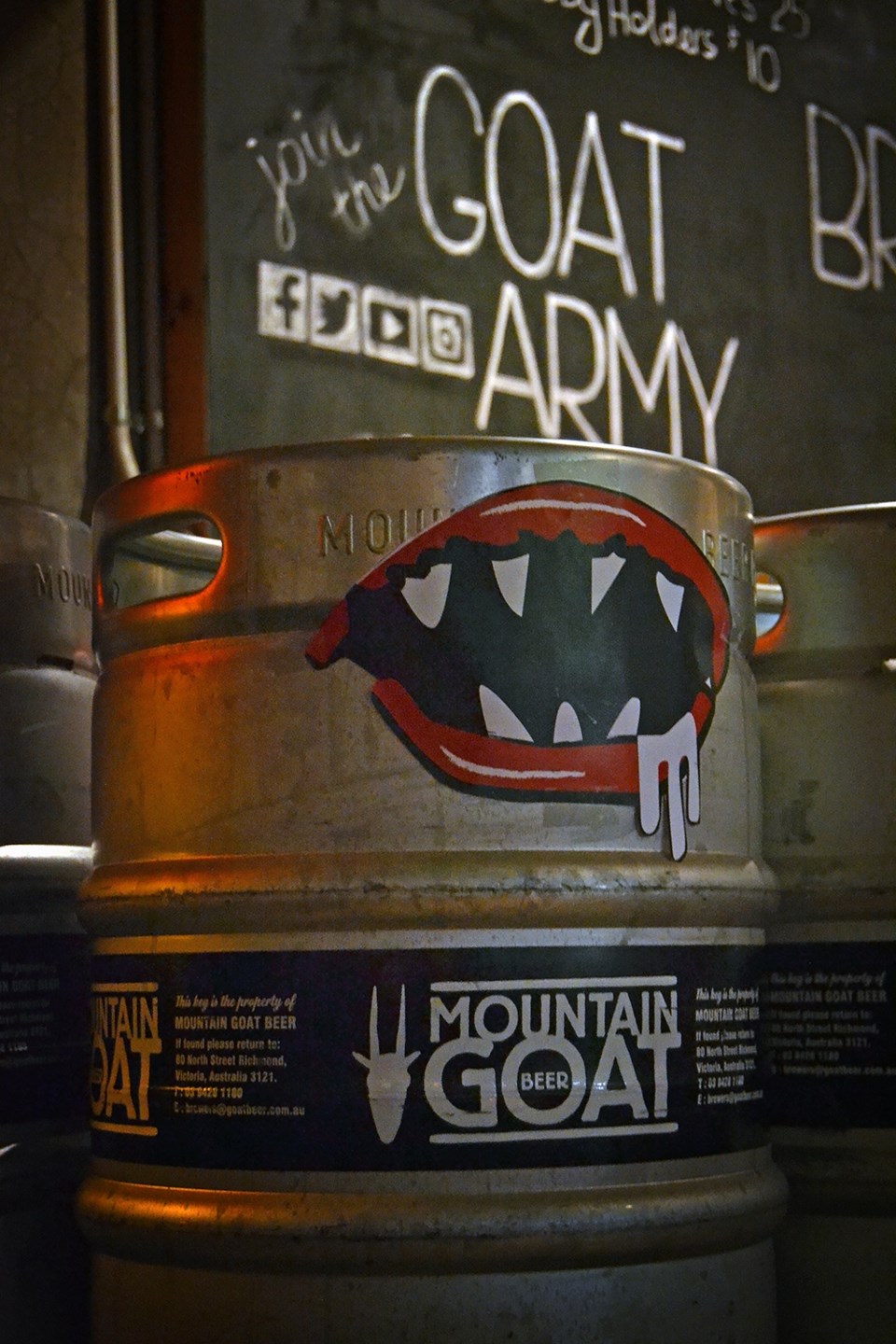
Banks turned them down. Investors scoffed. But stubborn as the name suggests, Hines and Bonighton were able to raise $100,000 from friends and family to make their dream a reality. Today, 20 years later, Mountain Goat is one of Australia’s most widely distributed and widely recognizable craft beer brands.
The Mountain Goat Brewery stands as a monument to their efforts. Housed in a massive warehouse in the Richmond neighbourhood, the space is inviting, if somewhat cavernous, with a tasting lounge adjacent to rows of soaring fermenters. The room has plenty of personality, with robotic sculptures welded from discarded brewing equipment and a bar made to look like a precariously high stack of beer cases. On sunny days (of which there are plenty in Melbourne, don’t listen to those lying Sydneysiders) they throw open the rolling bay doors and the party spills onto the street.
Mountain Goat may not take itself too seriously (a typically Australian trait), but the beer is seriously good. In particular, the Silence of the Rees In-Breed Coconut Porter (6.3% ABV, 25 IBUs) was a flavour bomb of roasted coconut, chocolate and vanilla, designed by brewer Alana Rees to resemble a lamington, a traditional Australian coconut cake dessert.
In 2015, Mountain Goat was sold to Japanese macro brewer Asahi, sending shockwaves through the Australian craft beer scene. But as Bentley tells it, very little has changed for the brewery.
“Asahi were already contract brewing our canned and bottled product, so literally nothing is different on that side of things,” he says. “Cam and Dave are still involved, but as consultants now.”
If there were any doubts about the quality of beer slipping, they were put to rest earlier this year when Mountain Goat picked up a pair of gold medals at the 2017 Australian International Beer Awards, winning for both Best IPA and Best New World-Style Pale Ale.
Moon Dog Rising
A short bike ride away in the neighbouring suburb of Abbotsford (these names starting to sound familiar?) is Moon Dog Craft Brewery, sitting in the literal shadow of the massive Carlton United Brewing complex, makers of Australians most popular lager, Victoria Bitter.
While many craft breweries have taken a somewhat adversarial approach to the big bad macros, Moon Dog gets along quite well with its neighbour.
“They’ve been a big help to us, actually,” says Mark Waghorne, Moon Dog’s head of sales. “They’ve helped us with lab results, sold us equipment, we’ve done collabs with [CUB-owned] Matilda Bay Brewing.”
The vibe at Moon Dog is the furthest thing from corporate, though.
Located in a non-descript alley like some secret craft beer PeeWee’s Playhouse, the dive-y tasting room is festooned with palm trees, Christmas lights, random neon, old mis-matched furniture and weird shit everywhere. It’s absolutely fantastic and utterly unpretentious, so you can’t help but instantly feel at ease. This place is just a lot of fun.
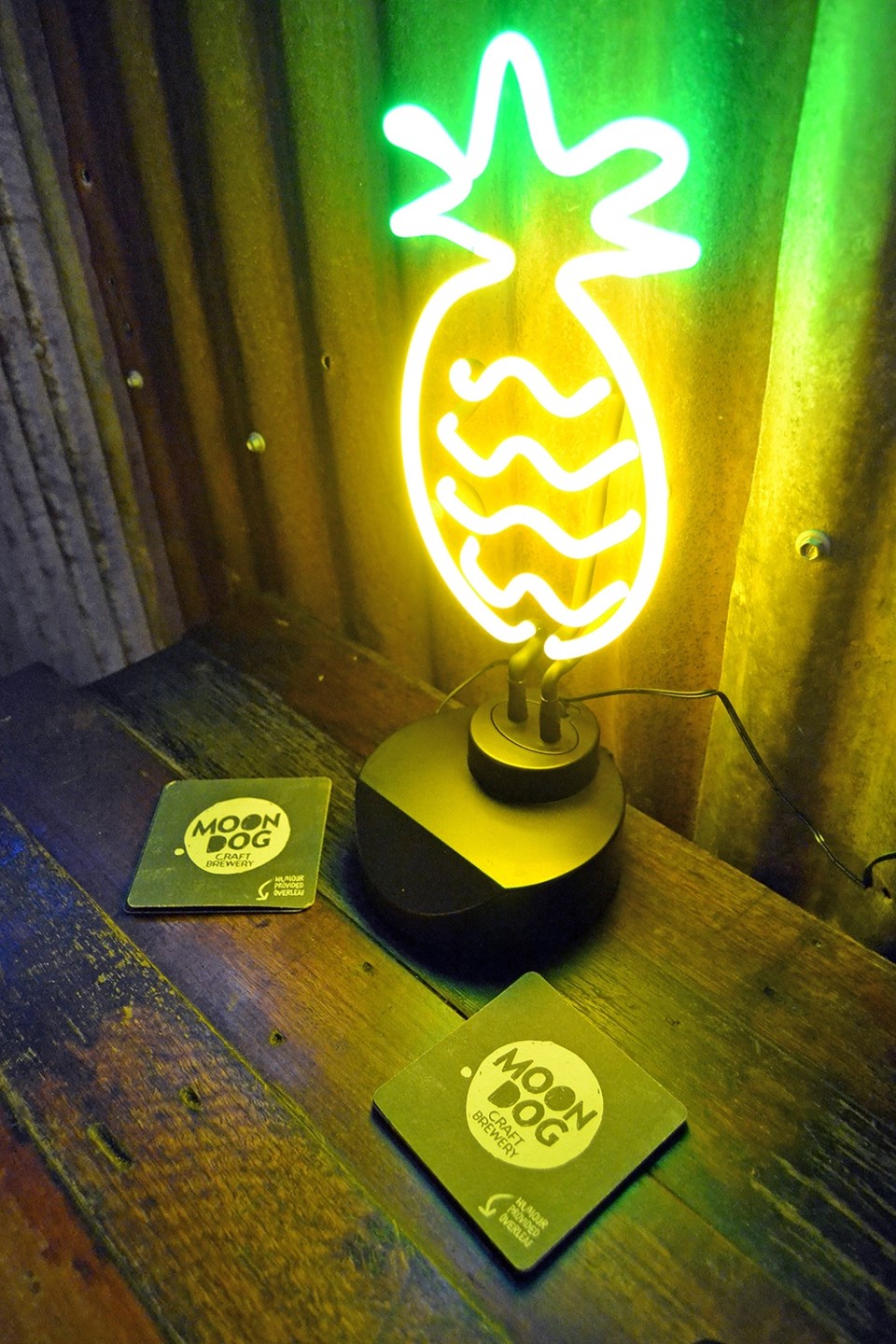
The beer is a lot fun, too. Many Australian craft breweries are still pretty conservative when it comes to their beer styles, but not Moon Dog. In fact, the first beer it ever brewed was a barrel-aged imperial red ale. I was most impressed by Mr. Mistoffelees (6.7% ABV, 12 IBUs), a wild ale aged on oak for seven months, resulting in a mildly tart beer packed with tropical fruit flavours and gobs of brett funk.
“Five or six years ago there weren’t a lot of people here who were educated in craft beer,” says Waghorne. “The summery, fruity beers are still a big part of the market, but the younger demo is a bit more adventurous.”
Hawker’s Delight
When Mazen Hajjar decided to move to Australia from Lebanon four years ago and open up Hawkers Beer, Melbourne was the only place he considered setting up shop.
“It’s 10 years ahead of Sydney,” he says. “Also, the colder weather here drives better beer.”
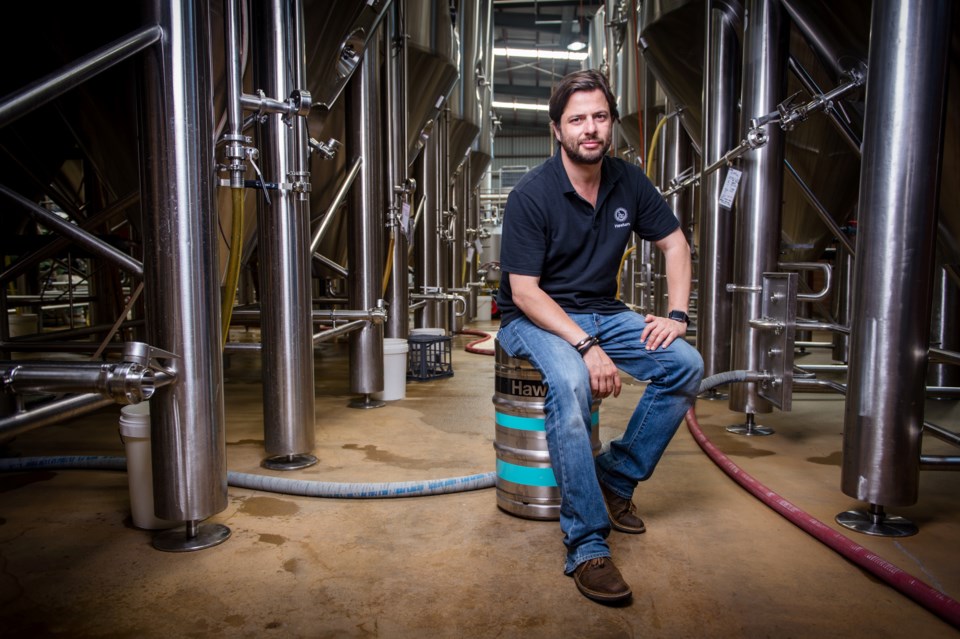
Hawkers, located in the leafy suburb of Coburg, is betting the Australian public are ready for craft beer. The brewery is currently undergoing a massive expansion that will effectively triple its size, and is planning to add a tasting room by the end of the year.
“Craft beer only makes up about two per cent of the market here, so we are trying to educate the public,” Hajjar says. “Most people love good beer, they just haven’t been exposed to it.”
Hawkers’ first beer, the aggressively-hopped West Coast-style Hawkers Pale Ale (5.2% ABV, 50 IBUs), became a smash hit for the brewery from moment it was released in 2015.
“In two years, we’ve upgraded our capacity seven times,” he says. “I knew we’d be successful when I saw one of our empty bottles in the street!”
Canada Moose
Thanks in part to the success of Mountain Goat (as well as other trailblazers like Cooper’s, Little Creatures and Stone & Wood), upstarts like Tallboy and Moose in Preston don’t have to do the legwork of converting the public to craft.
That said, Tallboy and Moose’s most popular beer is its lager-esque Tallboy Cream Ale (4.9% ABV).
“We consciously tried to make approachable beer in our first few months and from there we started tinkering,” says Toronto-raised co-owner Steve Germain, aka “Moose”.
“We do a wide range of interesting things, but the cream ale is paying the bills.”
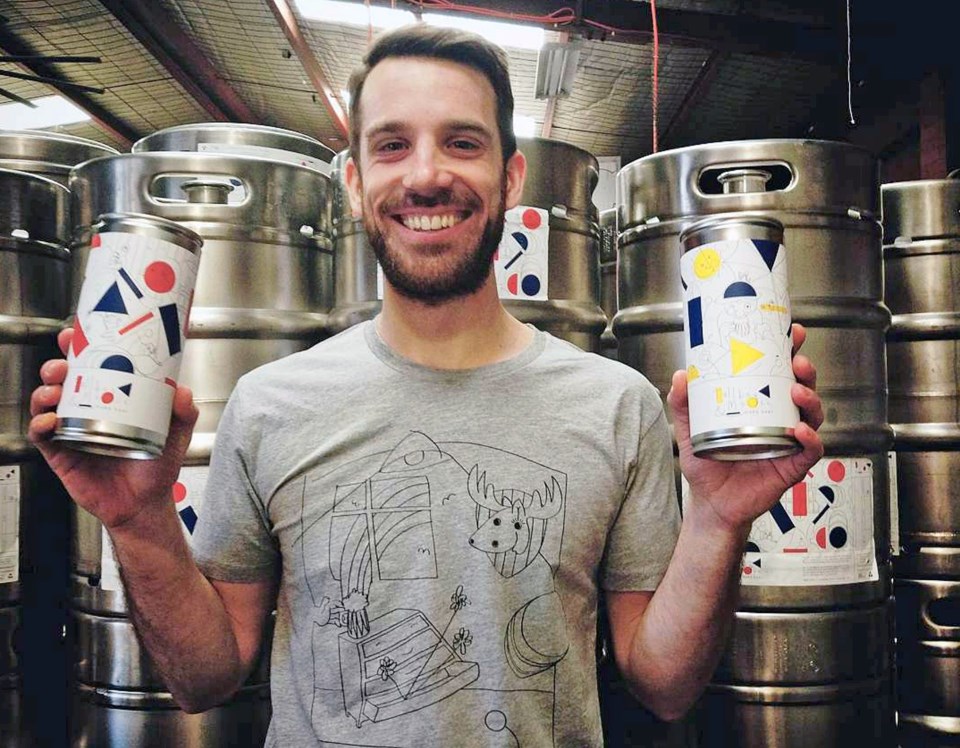
For North American craft beer drinkers, Tallboy and Moose will feel very familiar. The tasting room is uncluttered and sleekly minimalist and the beer list features everything from Berliner weisse to cask-conditioned English bitters.
One thing you won’t find at Tallboy and Moose – or in many Australian craft beer tasting rooms – is the growler-fill station. While not completely illegal, growler-filling is fraught with legislative red tape, and most breweries opt not to bother.
Strong beers are also noticeably absent. At Tallboy and Moose, all of the beers clock in at under 6.0% ABV, again, due to restrictive Australian liquor laws.
Punitive taxes are imposed on beer based on alcohol content, so stronger beers are generally prohibitively expensive. Wine, on the other hand, has no such restrictions in place.
“About one third of the cost of producing beer is tax,” says Germain. “If you want a pint of double IPA, it’s a $16 pint.”
The likely reason, of course, is that the notion of moderate drinking is still somewhat foreign to much of Australia (although thankfully that’s changing, and craft beer is a big part of that). The Melbourne Cricket Ground still won’t sell beer stronger than 3.5% for evening matches due to the absolute bedlam that would invariably ensue. If you’ve been to Garfinkel’s in Whistler on a Tuesday, you know what I’m talking about.
Summer lovin’
One style that keeps popping up in Australian craft breweries is the “summer ale.” This hybrid of the English summer ale and the West Coast pale ale is light in body and bone-dry. The early addition, high-alpha acid hops responsible for the piney, resiny bitterness that often characterizes the West Coast style is substituted for late additions of fruit-forward Australian hops like Galaxy and Vic Secret. Like its English cousin, the ABV is kept in the low fours, and wheat usually makes it into the grain bill. The result is a fruity and aromatic session ale that’s highly crushable and very adept at quenching thirsts.
“They're suited to the climate,” says Smith of their popularity. “They’re light, fruity and easy to settle into for a session, when well made.”
Yeah, that’s the thing about Australia, it’s pretty hot. Like, all the time. Barleywine just isn’t going to cut it when it’s 40 C with 98% humidity.
Sketches of Brunswick East
If Melbourne has a brewing district, or at the very least, a craft beer corner, it is to be found in Brunswick East. (King Gizzard and the Lizard Wizard named an album after this place, so you know it’s gonna be cool.)
Centred around Lygon Street between Brunswick and Glenlyon roads, this stretch of breweries, bars and bottle shops is at the heart of Australia’s growing fascination with decent beer. In addition to Temple Brewery and Thunder Road Brewing Co. (conveniently located a block apart), craft beer-focussed bars like the Alehouse Project, Atticus Finch and Eydie’s are doing their part to convert the masses to the gospel of craft.
“Brunswick East is probably the most important suburb for craft beer in Melbourne's Inner North craft beer heartland,” says Smith.
Temple’s award-winning beers feature a range of American styles, from hoppy pale ales and IPAs to its New World Order American Stout (an uncommon style in steamy Australia). Thunder Road, meanwhile, offers everything from barrel-aged porters to smoked lagers and Belgian tripels (along with the requisite pale ales and pilsners).
Both tasting rooms, from what I’ve heard, are well worth a visit. I’ll have to trust James on this one, though, because they were both closed on the Wednesday I was making my rounds.
Getting Around
If you plan to do some brewery-hopping in Melbourne, public transportation is the way to go. The city’s ubiquitous green trams are perfect for getting around in the city, while the extensive train system connects the more far-flung suburbs.
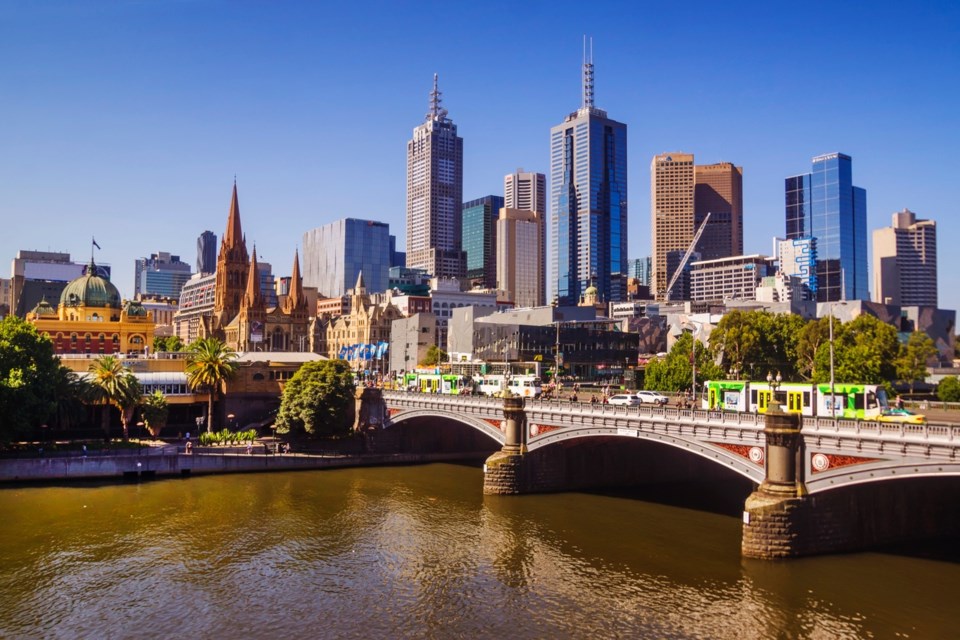
For B.C. craft beer fans spoiled by the myriad of walkable beer options at our doorstep, there may be some disappointment with how spread-out Melbourne’s breweries are. But it wasn’t so long that Vancouver was a veritable craft beer wasteland. In the past five years, our beer scene has grown leaps and bounds, and what’s exciting about Melbourne is that it too is poised for a craft beer explosion.
All the ingredients are here.
